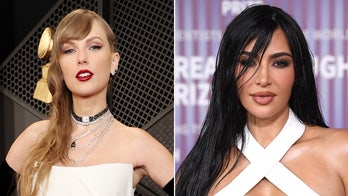
Britain's Queen Elizabeth leaves after attending the Commonwealth Service at Westminster Abbey in London, Britain March 12, 2018. (Reuters)
Queen Elizabeth II is set to hit another milestone on April 21 when she will turn 92 years old.
The British royal has been depicted in popular culture many times -- including in the Netflix series created by Peter Morgan, “The Crown,” where she’s played by Claire Foy.
“There’s a whole research team of ten working full time on the series so that every single episode can be based on solid history,” its historical consultant Robert Lacey told History Extra. “Peter Morgan takes his inspiration from that, then checks the scripts with people like me, as well as with the people who were actually involved in the real events – the best sources of all.”
He acknowledged that “from time to time, Peter also pushes his imagination to outright invention – what you could call dramatic license, or as I would prefer to put it, dramatic underlining.”
Royal historian Christopher Warwick told Fox News in an email that he’s watched “very little” of the show, before noting “I am aware that there are any number of inaccuracies and mistakes both in fact and detail.”
Ahead of the queen’s birthday, read on for a look at some of the plot points depicted in the program -- and the history behind them.
Warning: Spoilers below for “The Crown”
Caught on camera?
Elizabeth and her husband Prince Philip get into a dispute -- only to find themselves being filmed by a crew -- while in Australia in the first season. Eventually, the crew gives Elizabeth the footage, History Extra notes, with Lacey telling the website that the incident really took place.
“Our evidence for the incident comes from a PhD thesis on the tour researched by an Australian scholar who tracked down the camera crew,” he explained.
However, there was a slight variation in real life.
Lacey added, “One difference between what happened and what we see on the screen is that the crew themselves decided to open the back of the camera and expose the film, without any pressure from the royal family or from Commander Richard Colville [the Queen’s then-press officer].”
Venetia Scott
British prime minister Winston Churchill’s secretary Venetia Scott is hit by a bus during the Great Smog of London in December 1952 and dies in the show’s first season.
Scott’s death, however, is a fictional creation - as is the character.
“It is estimated that 6,000 people died of breathing-related diseases in London that month – more than were killed in any single month of bombing during the Blitz in the Second World War – and the way that ‘The Crown’ deals with that event dramatically is to have Venetia Scott die,” Lacey explained.
Prince Philip’s affair?
An extramarital relationship between Prince Philip and Russian ballerina Uliana Galinova is insinuated in the second season of “The Crown” yet no proof exists, Town and Country reports.
The news outlet notes that in real life, Philip has long been dogged by speculation about affairs with different women.
“Have you ever stopped to think that for the last 40 years, I have never moved anywhere without a policeman accompanying me?” Philip told The Independent in a 1992 article. “So how the hell could I get away with anything like that?”
The show doesn’t explicitly depict any affairs involving Philip.
Princess Margaret’s delayed engagement
A second season plot point involves the queen asking her younger sister Princess Margaret to hold off on announcing her engagement to photographer Antony Armstrong-Jones.
An excerpt of a biography about Armstrong-Jones published by Vanity Fair in 2009 goes into this tidbit.
“After giving her consent, the Queen, who was pregnant with Prince Andrew, asked if they would refrain from announcing their engagement until after the birth of her child,” author Anne de Courcy wrote.
Royal historian Hugo Vickers also covered the incident in his breakdown of the show -- which he said “depicts real life people in situations which are partly true and partly false” -- for The Times of London.
He wrote that “the film-makers have invented some dodgy protocol that the engagement could not be announced until Prince Andrew was born, since they decide that no announcement can be made ‘until the Sovereign’s child is born.’”
“It is true, however, that the Queen asked for the announcement to come after Prince Andrew’s birth,” Vickers continued.
Requests for comment from Lacey and Vickers were not immediately returned.






